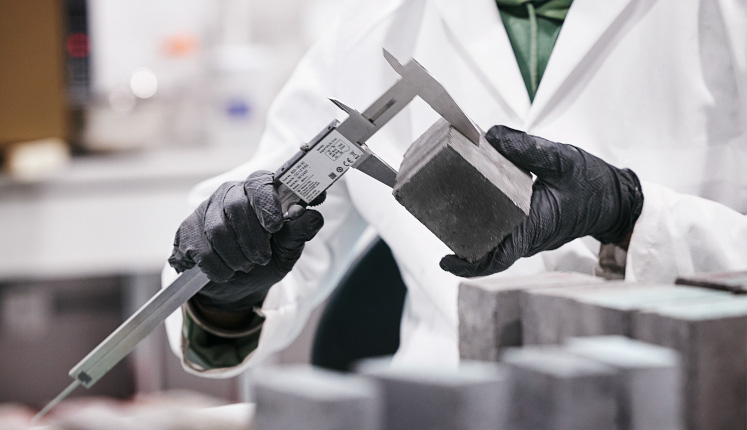
Strategies to mitigate the climate crisis are accelerating in line with the severity of global carbon emissions. Existing materials—like concrete—can be optimized using carbon capture, utilization and storage (CCUS) technology to permanently remove carbon from the atmosphere. When the end product of this CCUS is a hardened substance like concrete, this lasting carbon removal is dubbed “carbon mineralization,” an expansive field of research with various applications, and even more promise for a decarbonized future. CarbiCrete’s process for CO2 sequestering concrete is one of today’s innovations employing carbon mineralization, modelling the decarbonization possibilities of the construction industry and the built environment as a whole.
Sequestering carbon for hundreds of thousands of years is the simplified result of carbon mineralization, as Biorecro explains. The longevity of storage is a result of carbon being encased into a crystal structure of minerals, unlike storage in soil and trees, which can re-release CO2. Discussing mineralization for ClimateNow, James Lawler claims that “mineralization is like the holy grail of CDR technologies because it traps CO2 into the crystal structure of minerals, thereby permanently sequestering it from the atmosphere … with mineralization, CO2 becomes a part of a rock. There is nearly zero risk of it being re-released to the atmosphere.” This permanent storage is essential for meeting our global emissions targets.
While CO2 has been historically used in products like carbonated soda and instant coffee, carbon mineralization involves a different, complex chemical reaction that hardens CO2 into a mineral. Recently, mineralization technology has been advancing towards sequestering that CO2 into a range of consumable goods: construction materials. In the case of CarbiCrete, steel slag concrete is cured with CO2. In the presence of water, this CO2 gas reacts with calcium oxide in the steel slag, creating calcium carbonate, also known as limestone—strengthening and hardening the concrete while permanently trapping CO2 in the end product.
Through carbon mineralization, concrete can act as a permanent CO2 sink; a solution that can be adopted and scaled for deployment in today’s global marketplace. Unlike geological carbon storage, sequestering CO2 within recycled aggregates for concrete results in a marketable product—eliminating some supply chain complexities of transporting and sequestering the CO2 underground. The process for dry cast products like concrete masonry units (CMUs) begins with assembling the concrete mix (binder, aggregates, water), followed by molding. From there, the CMUs are cured in a CO2 chamber where the chemical reaction takes place. This means carbon mineralization happens to be one of the last steps of concrete production, resulting in a curing process that is quicker than the regular 28-day curing of conventional concrete.
Numerous companies today are employing carbon mineralization technology to carbonate cement-based concrete. Given the carbon emissions generated by clinker, the main component of cement, the impacts of doing so are only marginally better than using conventional concrete. The CarbiCrete process replaces cement in the concrete mix with steel slag, generating a “clean product” that produces no waste, lowers natural resource consumption, and permanently removes carbon through sequestration within the curing chamber. This curing method also results in better mechanical and durability properties compared to cement-based concrete. The implications of this technology on the pathway to net zero demonstrates the utility of carbon mineralization, should governments and industries rise to the challenge of global support and implementation.



